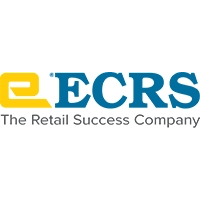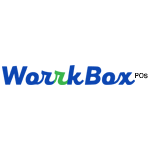Description

Oliver POS

NuovoPay
Comprehensive Overview: Oliver POS vs NuovoPay
Oliver POS
a) Primary Functions and Target Markets
Primary Functions: Oliver POS is a point-of-sale (POS) system designed specifically for businesses using WooCommerce. It aims to bridge the gap between online and offline sales by integrating e-commerce capabilities directly into a physical POS system. Key functions include:
- Seamless integration with WooCommerce, allowing real-time synchronization of inventory, customers, and orders.
- Support for multiple payment methods, including credit/debit cards, mobile payments, and cash.
- Easy management of products and inventory directly from the POS interface.
- Robust analytics and reporting capabilities to help businesses make informed decisions.
- Customer management tools, including loyalty programs and customer profiles.
Target Markets: Oliver POS primarily targets small to medium-sized businesses (SMBs) that rely on WooCommerce for their online sales but also require an efficient and integrated solution for physical storefronts. This includes sectors like retail, restaurants, and other service-based industries.
b) Market Share and User Base
Oliver POS is positioned within the niche market of WooCommerce POS solutions. Given WooCommerce’s significant adoption rate in the e-commerce sector, Oliver POS benefits by serving a targeted subset of this market. While precise market share figures can fluctuate, Oliver POS has carved out a niche by offering a tailored solution for WooCommerce users, a substantial demographic within the larger e-commerce environment.
c) Key Differentiating Factors
- WooCommerce Integration: Oliver POS’s seamless and direct integration with WooCommerce is its standout feature, making it highly attractive for users already invested in the WooCommerce ecosystem.
- Flexibility and Customization: The platform is known for its flexibility, allowing users to customize the POS system to meet specific business needs.
- Cloud-based Solution: Being a cloud-based POS, it provides real-time data access and facilitates multi-location management with ease.
NuovoPay
a) Primary Functions and Target Markets
Primary Functions: NuovoPay specializes in mobile device management and financing solutions. It focuses on enabling telecom carriers, finance companies, and businesses to control and monetize mobile devices distributed under financing schemes. Key functions include:
- Remote locking capability, ensuring devices under financing remain secured against misuse or non-payment.
- Compliance and risk management tools to enforce payment plans effectively.
- Data analytics for monitoring device usage and financial tracking.
- Integration capabilities with existing telecom and financial systems for smooth operations.
Target Markets: NuovoPay targets telecom operators, financial institutions, and enterprises that engage in the distribution or financing of mobile devices. It is ideal for companies that need to manage a large fleet of devices in various financing models, such as lease-to-own or subscription services.
b) Market Share and User Base
NuovoPay’s user base is more niche compared to broader POS systems like Oliver POS, as it caters to specific industries involved in mobile financing and management. Its market presence is marked by partnerships with telecom companies and financial service providers, both significant players in their respective sectors. Specific market share details might not be publicly available, but NuovoPay holds a strategic position in its specialized market segment.
c) Key Differentiating Factors
- Focus on Security: NuovoPay’s remote locking feature ensures device security, which is central to its value proposition, especially for financing models.
- Payment and Compliance Integration: It offers tools specifically designed to handle financial transactions and compliance, setting it apart in the realm of device management.
- Industry Specific Customization: NuovoPay provides solutions tailored to the operational needs of telecom and finance industries, offering compliance-driven features.
Conclusion
Both Oliver POS and NuovoPay serve distinct niches within the business technology landscape, focusing on point-of-sale solutions and device management respectively. While Oliver POS caters to businesses seeking an integrated e-commerce and physical shopping experience, especially those using WooCommerce, NuovoPay addresses the needs of telecom and finance entities overseeing financed or leased mobile devices. Their market shares and user bases reflect their specialized applications, with each offering unique features tailored to their target industries.
Contact Info

Year founded :
Not Available
Not Available
Not Available
Not Available
Not Available

Year founded :
2019
+1 307-463-7172
Not Available
India
http://www.linkedin.com/company/nuovopay
Feature Similarity Breakdown: Oliver POS, NuovoPay
When analyzing Oliver POS and NuovoPay, it's important to consider their primary functionalities, target audiences, and differentiating aspects. Here is a feature similarity breakdown for these two products:
a) Core Features in Common
-
Payment Processing:
- Both Oliver POS and NuovoPay facilitate secure and efficient payment processing, although Oliver POS is more focused on in-person transactions while NuovoPay handles mobile payments.
-
Integration Capabilities:
- They both offer integrations with various platforms to enhance their functionalities. For instance, Oliver POS integrates with popular e-commerce platforms (e.g., WooCommerce), while NuovoPay integrates with mobile network operators and device financing platforms.
-
User Management:
- Both platforms provide tools to manage users effectively, ensuring that the right access levels and permissions are in place.
-
Analytics and Reporting:
- Oliver POS and NuovoPay provide analytics and reporting features that help businesses make informed decisions based on transaction data.
b) User Interface Comparison
- Oliver POS:
- This platform typically offers a more retail-focused, intuitive user interface with a layout designed for quick access and efficient in-store operations. It caters to users who are handling physical goods and point-of-sale transactions.
- NuovoPay:
- The interface here is likely to be more streamlined for digital financial transactions, with a focus on managing mobile devices and payments rather than physical inventory. Its design is aimed at simplicity and ease of use for financial operations and management.
The UI of each platform is tailored to its primary function: Oliver POS for retail and NuovoPay for mobile finance management.
c) Unique Features
-
Oliver POS:
- Omnichannel Retail Solution: It seamlessly integrates online and offline sales data, allowing businesses to manage both channels from a unified system.
- Hardware Compatibility: Offers compatibility with a range of point-of-sale hardware, meeting diverse retail setup needs.
-
NuovoPay:
- Device Lock Control: A distinctive feature that enables the locking of financed devices until payments are made, catering to companies involved in device financing.
- Mobile Financing Integration: Specifically designed to integrate with telecom and financing systems, providing management tools for mobile payments and installments in developing markets.
Each product is tailored to its specific market needs: Oliver POS focuses on retail operations, while NuovoPay hones in on mobile payment and device management. These unique features highlight their specialized capabilities beyond shared functionalities.
Features

Integration Capabilities
Ease of Use
Reporting and Analytics
Customer Support

Payment Collections
Device Management
Reporting and Analytics
Best Fit Use Cases: Oliver POS, NuovoPay
Oliver POS
a) Best Fit Use Cases for Oliver POS:
Oliver POS is particularly suited for businesses that are deeply integrated with the WooCommerce platform. Here are a few scenarios where Oliver POS would be the best choice:
-
Small to Medium Retailers: Retail businesses that operate using the WooCommerce platform for their online store and need an integrated Point of Sale (POS) system for their physical locations can benefit immensely. Oliver POS allows for seamless inventory management and synchronization between online and offline sales.
-
Boutique Shops and Specialty Stores: Independent shops that value customization, such as boutiques or specialty food stores, will find Oliver POS advantageous for its flexibility and integration capabilities.
-
E-commerce Businesses with Physical Locations: Companies that primarily operate online but have pop-up shops, showrooms, or physical stores can use Oliver POS to maintain a consistent database and improve sales tracking.
d) Catering to Different Industry Verticals and Company Sizes:
Oliver POS caters to industries such as retail, fashion, food and beverages, and other consumer-related sectors. The scalability of Oliver POS allows it to be used by small businesses and growing medium-sized businesses that need a comprehensive POS solution integrated with their online stores. It simplifies the sales process and provides insights that are crucial for strategic decision-making in these sectors.
NuovoPay
b) Preferred Scenarios for NuovoPay:
NuovoPay is ideally suited for businesses that deal with financing and leasing electronic devices. Here are scenarios where NuovoPay would be the preferred option:
-
Telecom Companies and Mobile Network Operators: These companies can use NuovoPay to manage device financing and ensure payments are collected on time, reducing the risk of non-payments for devices sold on installment plans.
-
Electronic Device Leasing Companies: Businesses that specialize in leasing electronic devices like smartphones, tablets, or laptops can use NuovoPay to manage their device portfolios, automate payments, and secure their assets.
-
Educational Institutions with Device Offerings: Schools and universities that provide devices to students as part of their curriculum can leverage NuovoPay to ensure that payments are made timely and manage the lifecycle of these devices.
d) Catering to Different Industry Verticals and Company Sizes:
NuovoPay is highly relevant in telecom, education, and finance sectors. It caters to medium to large enterprises that deal with device distribution and financing, ensuring secure transactions and management of leased assets. It’s particularly beneficial for operators and institutions with large volumes of devices needing stringent payment and management systems.
By targeting specific industry needs, Oliver POS and NuovoPay serve distinct markets and provide solutions tailored to the operational scale and complexity of different businesses. Oliver POS is focused on providing seamless retail solutions, while NuovoPay is centered around financial security and management in device leasing.
Pricing

Pricing Not Available

Pricing Not Available
Metrics History
Metrics History
Comparing teamSize across companies
Conclusion & Final Verdict: Oliver POS vs NuovoPay
When concluding a comparison between Oliver POS and NuovoPay, several factors should be considered, such as pricing, features, ease of use, customer support, integration capabilities, and the specific needs of the user or business.
Conclusion and Final Verdict:
a) Best Overall Value:
The best overall value between Oliver POS and NuovoPay largely depends on the specific needs of the business. Oliver POS might offer better value for retail businesses looking for a robust point-of-sale system with strong integration capabilities. On the other hand, NuovoPay may provide better value for businesses in need of a mobile device management solution focused on protecting revenue and managing payment deferrals.
b) Pros and Cons:
Oliver POS:
-
Pros:
- Strong Integration with WooCommerce: Seamlessly connects with WooCommerce, which can be beneficial for businesses already using this e-commerce platform.
- Flexibility and Scalability: Suitable for small to medium-sized businesses with options to scale as the business grows.
- User-Friendly Interface: Provides an intuitive interface that makes it easy for staff to learn and operate.
-
Cons:
- Dependency on WooCommerce: Businesses not using WooCommerce may find fewer advantages.
- Potential for Additional Costs: Users might incur additional costs for advanced features or integrations.
NuovoPay:
-
Pros:
- Mobile Device Management: Helps businesses manage and secure their mobile device leasing, reducing risk.
- Revenue Protection: Offers tools for managing payment deferrals and aligning payment collection with device access.
- Easy to Implement: Designed to be straightforward to set up and integrate with existing business processes.
-
Cons:
- Niche Application: Primarily beneficial for businesses involved in device leasing or those who need strict device management.
- Limited E-commerce Capabilities: Does not offer the same e-commerce support as Oliver POS.
c) Recommendations:
-
Determine Core Needs: Businesses should first identify their core requirements. If you need an effective POS system for a retail environment, Oliver POS might be more suitable. For those focused on managing mobile devices and preventing revenue leakage, NuovoPay could be the better option.
-
Consider Existing Systems: Evaluate existing platforms and software your business already uses. If your business is built around WooCommerce, Oliver POS may offer smoother integration and added features that complement your current systems.
-
Assess Budget and Scalability Needs: Analyze the cost implications and how each product can scale with your business. Consider potential future needs as your business grows or pivots.
-
Pilot and Review: If possible, pilot both systems to get a firsthand experience of their functionalities and customer support responsiveness. This trial period can provide insights into which platform better aligns with your operational workflow.
Ultimately, the decision should be driven by the specific operational needs, strategic goals, and existing infrastructure of the business. By carefully weighing these elements, businesses can select a platform that delivers the best long-term value and aligns with their objectives.
Add to compare
Add similar companies




